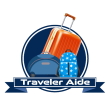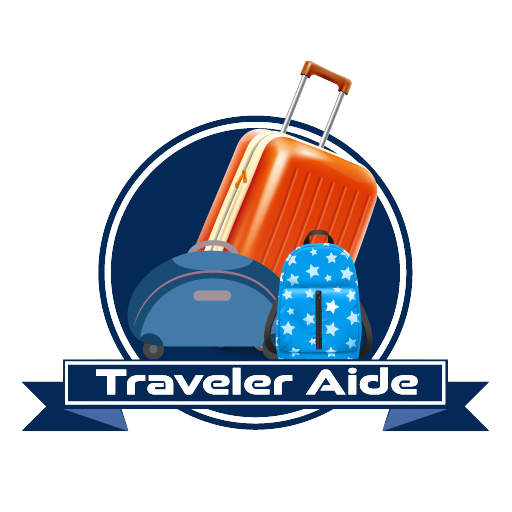If you’ve ever daydreamed about sipping espresso in Paris, hiking through the Swiss Alps, or watching the sunset in Santorini—all by yourself—this guide is for you.
Traveling solo as a woman in Europe can feel both thrilling and intimidating. There’s the excitement of freedom and new experiences, but also the natural worry about safety, loneliness, or just figuring things out on your own in a new place.
I’ve been there. In my first solo trip, I clutched my bag a little too tightly on the Paris Metro, second-guessed every decision, and smiled awkwardly at empty chairs in restaurants. But by the end of that month, I walked more confidently, made new friends, and even picked up a little Italian along the way.
Let’s break this down together—because solo female travel in Europe is absolutely doable. And it’s one of the most empowering things you can do for yourself.
Why Europe Is Great for Solo Female Travelers
Europe is often considered one of the best regions in the world for solo travel—and for good reason. Here’s why:
1. Excellent Transportation
You don’t need to drive or rely on tours. The trains are efficient, clean, and well-connected. Whether it’s the Eurostar zipping from London to Paris or a scenic ride through Austria, getting around is easy.

2. Safe for Women
Many European cities consistently rank high for solo female safety. Destinations like Copenhagen, Ljubljana, and Vienna are known for low crime rates and friendly locals.
Of course, like anywhere, common sense goes a long way. Be aware of your surroundings, especially at night or in busy tourist areas.
3. Tons of Other Solo Travelers
You’ll never really feel alone—unless you want to. Hostels, walking tours, and cafés are great places to meet fellow travelers. Many cities are used to solo visitors and cater to them with group activities, cozy accommodations, and welcoming locals.
4. Language Isn’t a Major Barrier
In most of Western and Central Europe, English is widely spoken—especially in tourist areas. Learning a few local phrases is appreciated (and fun), but you won’t struggle to get by.
Choosing the Right Destinations
Not every place in Europe is ideal for your first solo trip, but many are! Start with cities that are:
- Safe
- Walkable
- Easy to navigate
- Well-connected by public transport
- Full of solo-friendly activities
Here are a few beginner-friendly ideas:
- Amsterdam, Netherlands – Great for biking, museums, and laid-back vibes.
- Barcelona, Spain – Beach + culture, but keep an eye on your bag.
- Kraków, Poland – Affordable, pretty, and full of history.
- Florence, Italy – Art, food, and Tuscan charm in one compact city.
- Ljubljana, Slovenia – One of Europe’s safest and most underrated gems.
What to Pack (and What to Leave Behind)
Packing smart can make or break your trip. When you’re on your own, every item in your backpack or suitcase matters. The goal? Pack light, but pack right.
Essentials for Solo Female Travelers
- A crossbody anti-theft bag: Keeps your hands free and your belongings secure.
- Comfortable walking shoes: Think stylish sneakers or low-heeled boots. You’ll walk a lot.
- A lightweight scarf: Doubles as a fashion piece, beach cover-up, or impromptu blanket.
- Power bank: Your phone is your map, translator, and lifeline—keep it charged.
- Copy of important documents: Leave one at home and carry a digital version.
- A journal: Trust me—you’ll want to remember more than just the Instagram moments.
Clothing Tips
Europeans dress casually chic. That doesn’t mean you need to overhaul your wardrobe—just pack clothes that make you feel comfortable and confident.
A good rule of thumb:
- 2–3 tops
- 2 bottoms (a skirt and pants or jeans)
- 1–2 dresses
- A jacket or cardigan
- Layers for unpredictable weather
Avoid overpacking. You’ll appreciate the lighter load every time you walk up stairs in a train station without an elevator.
Safety Tips That Actually Help
Let’s get honest: Safety is often the number one worry for solo female travelers. And while Europe is generally safe, especially compared to many other parts of the world, it’s smart to be prepared.
Here’s what I’ve learned—without paranoia, but with practicality:
1. Trust Your Gut
If something feels off, it probably is. Whether it’s declining a drink, leaving a crowded area, or choosing a different route home—listen to that inner voice. It’s there for a reason.
2. Blend In When You Can
You don’t need to disguise yourself, but avoiding flashy jewelry or branded gear can help you look less like a tourist. Learn local customs too. In Italy, locals rarely wear shorts to dinner. In Paris, gym clothes aren’t streetwear.
3. Stay Connected
Let someone back home know your rough itinerary. Check in from time to time. Apps like Find My or Google Location Sharing can be useful if you’re traveling through remote areas.
4. Learn Local Emergency Numbers
It’s easy to forget, but different countries have different emergency numbers. In most of the EU, it’s 112. Save it in your phone.
Is Solo Dining Awkward?
Short answer: Only at first.
The first time I ate alone in Europe, I was in Prague. I kept fidgeting with my napkin, wondering if everyone was staring at me. (They weren’t.) By the third meal, I was people-watching over pasta and loving it.
Tips to Feel More Comfortable:
- Bring a book or journal.
- Sit outside and enjoy the view.
- Treat yourself—get the dessert.
- Try a food tour if you want company.
Solo dining is one of the most freeing parts of traveling alone. You eat what you want, when you want, and no one judges your double gelato order.
Meeting People Without Feeling Weird About It
Traveling solo doesn’t mean being lonely. In fact, many women find it easier to meet people when they’re on their own.
You’re more approachable, open, and free to follow conversations where they lead. Still, it’s natural to wonder how you’ll actually meet anyone. Here’s how I’ve made friends in different corners of Europe:
1. Stay in Social Accommodations
- Hostels: Don’t dismiss them! Many have female-only dorms or private rooms with social areas. Places like Generator (in cities like Berlin and Amsterdam) are stylish, clean, and perfect for solo travelers.
- Boutique hotels or B&Bs: Often run by locals who love chatting with guests.
- Homestays: Apps like Couchsurfing (check reviews!) or platforms like TrustedHousesitters can offer real cultural exchanges.
2. Join a Walking Tour or Day Trip
Free walking tours are gold. They usually last 1–2 hours, cost little or nothing (tip-based), and attract solo travelers. I met three friends on a food tour in Lisbon, and we ended up exploring together for the next two days.
Group day trips—like a wine tour in Tuscany or a fjord cruise in Norway—also make meeting people easy and low-pressure.
3. Use Apps Without the Creep Factor
- Meetup: Great for language exchanges, hikes, and hobby groups.
- Tandem: If you’re trying to practice a new language.
- Bumble BFF: Surprisingly helpful in cities like Vienna and Barcelona.
Always meet in public places and trust your instincts—no matter how nice someone seems.
What If You Feel Lonely or Overwhelmed?
Let’s be real. Not every day will be a highlight reel. Sometimes you’ll feel homesick or just tired of making all the decisions. That’s normal.
Here’s how I deal when solo travel feels a bit too solo:
Give Yourself Permission to Rest
You don’t have to fill every hour. Lounge in your hotel room. Watch Netflix. Take long showers. Recharge.
Journal the Good, the Weird, and the Ugly
Solo travel gives you space to process things—use it. I write in a small notebook every night. Reading back on those pages later? Priceless.
Call Someone
Whether it’s your best friend, mom, or a partner—hearing a familiar voice helps. Wifi calling makes it easy and free.
Remember Why You Started
You’re doing something brave, something most people only dream about. You might feel lonely right now, but growth is happening beneath the surface.
Budgeting for Solo Female Travel in Europe
Traveling solo means no one to split taxis or hotel rooms with—but it also means total freedom to control your budget. Whether you’re going luxe or backpacking through hostels, you can travel smart.
Typical Costs You Can Expect
Note: Prices vary widely by country. Eastern Europe tends to be cheaper than Western Europe.
- Accommodation:
- Hostel: €20–€40/night
- Budget hotel: €50–€100/night
- Mid-range hotel or Airbnb: €80–€150/night
- Hostel: €20–€40/night
- Food:
- Bakery breakfast: €3–€5
- Lunch at a casual café: €8–€12
- Dinner with wine: €15–€25
- Bakery breakfast: €3–€5
- Transport:
- Eurail Pass: €250–€500 for 1 month
- Metro/tram tickets: €1.50–€3
- Budget flights (Ryanair, easyJet): €10–€50 if booked early
- Eurail Pass: €250–€500 for 1 month
- Attractions:
- Museums: €5–€15
- Walking tours: Free or tip-based
- Day trips: €30–€100
- Museums: €5–€15
Money-Saving Tips
- Travel off-season: April–June and September–October are sweet spots.
- Cook occasionally: Many hostels and Airbnbs have kitchens.
- Use local SIMs: Cheaper than international roaming.
- Walk or bike: Many European cities are incredibly walkable.
- Use budget airlines—but beware fees: Read the fine print before booking.
Best Times to Travel Alone in Europe
Timing can make or break your solo travel experience. Here’s a breakdown by season to help you decide:
Spring (April to June)
Pros:
- Fewer crowds than summer
- Blooming gardens and festivals
- Mild weather
Great for: Paris, the Netherlands, and Southern Germany
Summer (July to August)
Pros:
- Lively atmosphere, endless daylight
- Outdoor events and open-air dining
Cons:
- Higher prices, crowds, heat in southern Europe
Great for: Scandinavia, the UK, and the Baltics
Fall (September to October)
Pros:
- Golden light and autumn colors
- Fewer tourists
- Lower costs
Great for: Italy, Croatia, and the Czech Republic
Winter (November to February)
Pros:
- Christmas markets, cozy cafés
- Great deals on flights and hotels
Cons:
- Shorter days, colder weather
Great for: Austria, Germany, and city breaks like Prague or Budapest
Mistakes to Avoid as a First-Time Solo Female Traveler
Everyone makes mistakes—it’s part of the learning curve. But if I could go back and whisper in my own ear before my first solo trip, here’s what I’d say:
1. Don’t Overplan Every Detail
You don’t need a color-coded spreadsheet with every hour filled. Leave room for spontaneity. Some of my favorite memories happened on days I “had nothing planned.”
2. Don’t Book Too Many Countries
It’s tempting to try to “see it all.” But slow travel = better travel. Three or four cities over two weeks lets you actually experience them, not just check them off.
3. Don’t Ignore Your Energy Levels
Yes, Europe is exciting. But trying to do too much every day will burn you out fast. Build in rest days. Sip coffee by the river. You don’t need to climb every tower or visit every museum.
4. Don’t Be Shy About Asking for Help
Lost? Confused by a menu? Need directions? Most people want to help. A smile and a polite question go a long way, even if you don’t speak the language.
5. Don’t Let Fear Stop You
You will be nervous at first. That’s okay. Keep going. By day three, you’ll feel a little bolder. By week two, you’ll laugh at what once scared you. Confidence builds fast when you’re doing things solo.
Final Thoughts: Why Solo Female Travel in Europe Is Worth It
There’s something incredibly powerful about navigating a foreign city alone. You learn to trust yourself. You learn what you like and what you don’t. You learn how to read a train schedule in a language you don’t speak—and still end up where you’re going.
Europe is a beautiful, diverse, and mostly safe playground for solo female travelers. Whether you’re drawn to art museums in Florence, thermal baths in Budapest, or the dramatic cliffs of Portugal’s coast—there’s a place here waiting for you.
You’ll come back with more than souvenirs. You’ll return with stories, confidence, and a quiet pride that says:
“I did this. And I can do anything.”
Related Keywords You Might Also Search
- Best European cities for solo female travel
- How to stay safe while traveling alone in Europe
- Europe itinerary for solo women
- Solo travel packing list
- Where to stay as a solo female traveler


